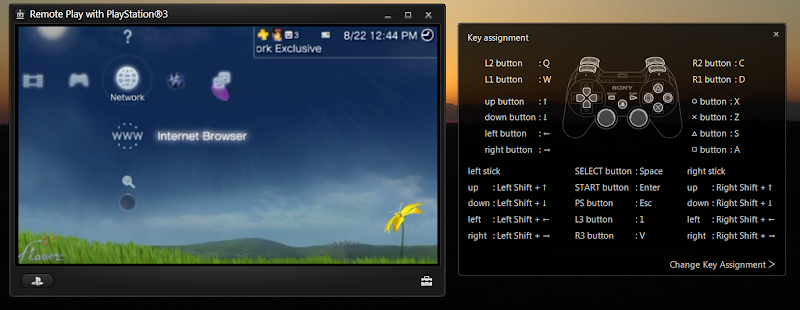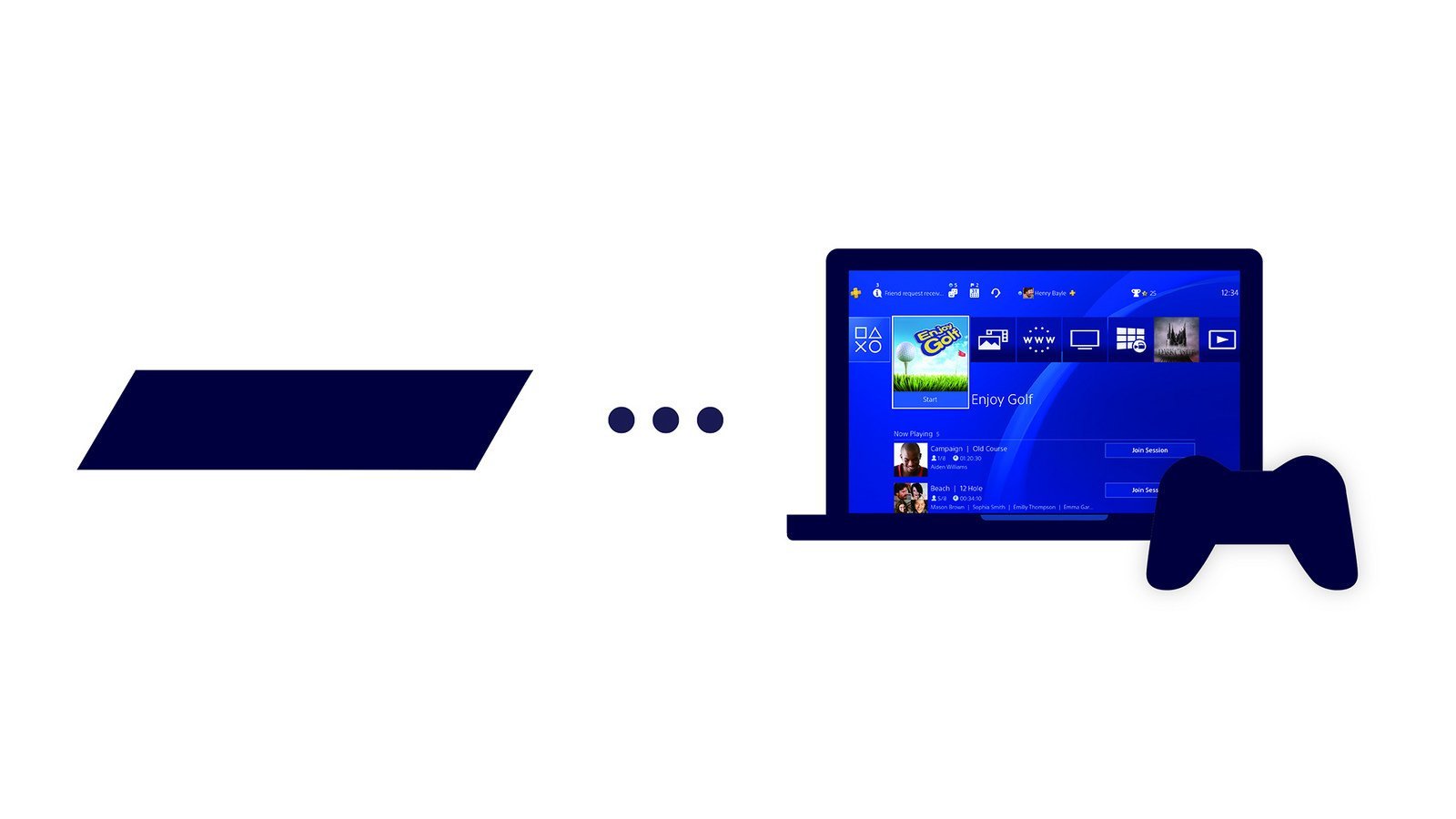Recent Versions of RetroPie (3.0+, 4.0+)
MidnightMan attempted the Remote Play method using a number of devices. First he tried connecting his PS5 controller to his iPad and iPhone, but was unable to find a Bluetooth connection with both. Download Sony PS3 Remote for free. A collection of applications that allow seamless, configurable and powerful integration of the Sony PS3 Remote with Linux through LIRC.
The most recent versions of RetroPie include the packages needed for setting up a PS3 controller. Connecting over USB is Plug-and-Play--literally just plug your controller into the Pi while EmulationStation is running and it should detect a gamepad to configure. Connecting a PS3 controller via Bluetooth requires installation of a special PS3 driver located in RetroPie setup.
NOTE: Installing multiple controller drivers may cause conflicting issues. If you are having trouble pairing, check if other drivers are installed and try removing them.
Two drivers are available:
sixaxis(since RetroPie 4.4.9): this is a helper service that configures the default kernel driver (hid-sony) and BlueZ plugin (sixaxis). This is the recommended driver, but third-party support is not well-tested.ps3controller: this driver is well-tested and works with third-party controllers, but has the disadvantage of crippling the Bluetooth stack, as well as requiring a different button mapping to be defined compared to the USB connection.
Configuring a PS3 controller to connect via Bluetooth
Before booting the Raspberry Pi, make sure that a supported Bluetooth adapter is connected (for the Pi 3, onboard Bluetooth works perfectly as of RetroPie 4.0+). If you have a Playstation 3 console near by, make sure it is totally powered off--either unplugged or switched off in the back--because the PS3 controller may try to automatically pair with the console otherwise. While a separate powered USB hub is not required to set up a controller, be mindful of your overall power draw when attaching peripherals. If you are overclocking, for example, it will be much safer to use a powered USB hub than drawing current from the Pi itself.
After your Pi boots up, you need to enter RetroPie setup. You can do this one of two ways:
- Setting up your keyboard or PS3 controller as a USB gamepad in EmulationStation (you must configure a gamepad before you can use EmulationStation), navigating to the 'RetroPie' icon in the Home Screen, and selecting it using whatever key you mapped 'A' to on your gamepad.
- Pressing F4 to quit EmulationStation and running the Retropie script from the terminal. Once you're in the terminal, follow these instructions to run the
retropie_setup.shscript.
Using the RetroPie-Setup GUI to configure the PS3 Controller Bluetooth Connection (for sixaxis)
- Navigate to the 'RetroPie' icon in the Home Screen and select it using whatever key you mapped 'A' to on your gamepad, and go to 'RetroPie Setup'.
- Once in the RetroPie Setup GUI, choose
[Manage packages]>[driver]. - Select the
sixaxisdriver, and then select[Install from source].- If you have a third-party controller, you must also navigate to
[Configuration / Options]and select[Enable support for third-party controllers]; installation may take several minutes, so be patient.
- If you have a third-party controller, you must also navigate to
- Once installation completes, exit RetroPie Setup and return to the EmulationStation Home Screen.
- While staying in the 'RetroPie' section, select the 'Bluetooth' item.
- Select
[Register and Connect to Bluetooth Device]and follow the on-screen prompts to pair your controller. - Once successfully paired, exit the Bluetooth menu.
Your controller should now work using the same mappings configured via USB.
Using the RetroPie shell to configure the PS3 Controller Bluetooth Connection (for sixaxis)

At the EmulationStation Home Screen, press F4 to quit EmulationStation and run the RetroPie Setup script from the terminal. Once you're in the terminal, follow these instructions to run the retropie_setup.sh script.
Although it is not required, it is always a good idea to update the setup script by selecting
After updating, run the retropie_setup.sh script again.
Now select Manage packages > Manage driver packages > sixaxis -> Install from source. * If you also require third-party controller support, navigate to (Manage packages > Manage driver packages > sixaxis) -> Configuration / Options -> Enable support for third-party controllers (keeping in mind that this may take several minutes to complete).
In order to pair controllers, use RetroPie-Setup's Bluetooth menu, which can be accessed via Configuration / tools -> bluetooth. Select Register and Connect to Bluetooth Device and follow the on-screen steps to pair your controller.
Using the RetroPie-Setup GUI to configure the PS3 Controller Bluetooth Connection (for ps3controller)
- Navigate to the 'RetroPie' icon in the Home Screen and select it using whatever key you mapped 'A' to on your gamepad, and go to 'RetroPie Setup'.
- Once in the RetroPie Setup GUI, choose [Manage packages] > [driver].
- Select PS3 Controller Driver ('ps3controller'), and then select [Install from source].
- If you have a Tpfoon PS3 Controller you need to go to
[Configuration / Options]>[Install/Pair PS3 Controller (Clone support Shanwan)]
- If you have a Tpfoon PS3 Controller you need to go to
- Once installation completes, exit RetroPie setup and return to the EmulationStation Home Screen.
- Press 'Start' to enter the EmulationStation Menu, and select Configure Input.
- Disconnect your PS3 controller from USB. Now hold the PS button on the controller down until you see the lights on it flash sequentially. The controller should now be connected via Bluetooth.
- Emulation Station should now detect another gamepad connected. Hold any button down on the controller to begin configuring it.
And you now have a functional PS3 controller over Bluetooth.
Some PS3 Controller clones (such as the Shanwan PS3 Controllers) will not connect over bluetooth until they are physically connected and removed from a normal USB connection. If you are having issues pairing a controller, try connecting it via USB for several seconds, disconnecting it, and then pairing it over Bluetooth.
Using the RetroPie shell to configure the PS3 Controller Bluetooth Connection (for ps3controller)
Note: Do not enable other bluetooth options as these will conflict with the PS3 specific bluetooth setup (sixad)
At the EmulationStation Home Screen, press F4 to quit EmulationStation and run the Retropie script from the terminal. Once you're in the terminal, follow these instructions to run the retropie_setup.sh script.
Although it is not required, it is always a good idea to update the setup script by selecting
After updating, run the retropie_setup.sh script again.
Now select Manage packages > Manage driver packages > ps3controller
After it finishes compiling, the GUI prompt will ask you to make sure that your Bluetooth dongle is connected. Press enter and connect your PS3 controller.
Once this is done, you can disconnect the controller USB cable, and press the Playstation button to pair it via Bluetooth.
After installation of PS3 controller driver bluetooth connection of new controllers will be configured automatically if you connect them over usb.
Persisting bluetooth (ps3controller only)

Device Registration For Remote Play On Ps3 Wireless Controller
For bluetooth pairing to persist between reboots you need to make sure sixad is executed during startup.Exit EmulationStation and and edit rc.local.
Add sixad --start & before the line exit 0 and save (ctrl-x then y)

Manually setting input (ps3controller only)
If the keys stop working in-game after switching to bluetooth or you want to configure inputs manually you can do this the recommended way using the RetroArch configuration UI (under settings > input) or by creating a input map manually:
Example config:
For older versions of RetroPie
For setting up the PS3 Controller we're going to be following This post
(now oddly i couldn't get to Pair constantly with bluetooth but worked over USB, but for those getting it to work over bluetooth's sake we're going to follow the guide step by step)
First: Besides having a bluetooth adapter :P we're going to install all dependencies required
Now that's installed (and a reboot if you plugged in your dongle afterwards) run hciconfig to make sure it's seeing your dongle, if it has not, a dependency failed to install or your dongle is not supported by RetroPie SD (Raspbian) or the said OS running. you should see an output with information like this:
Next we're going to pair using this toolDownloading and compiling is pretty quick and straight forward:
however sixpair must be run as root, so connect via USB and run sudo ./sixpair.If successful you should see:
now this is where the magic happens
we're going to install an Sixaxis Manager this is what will let us use the controller as an input over bluetooth and USB. (mycase i only got over USB you may vary!)
The source code requires a patch to compile correctly as of right now, so we'll download and apply it
It should now correctly build and install
now if we want to make it so per every time we need it on demand: we start the controller daemon like so:
if we want it at boot time then we use this command:
if you have any issues with the controller you can debug it with sudo jstest /dev/input/js0
Input Lags or problems to connect more then 2 players
Device Registration For Remote Play On Ps3 Switch

Disconnect Bluetooth Controller
To disconnect the controller, hold down the ps3 button for 10 seconds.
Ghost inputs, controller sending key presses on its own
Register Device Ps3 Computer
That's a problem with the controller itself rather than RetroPie. The controller sends very short key presses (usually d-pad directions) that are commonly ignored by games, but might be noticed outside them. Even genuine brand-new controllers may or may not suffer this issue. The same problem has been observed on other brands like Buffalo and Wii. If analog input isn't strictly necessary to you, you can try to map one of the sticks as a d-pad and adjust its dead zone if you still have phantom menu navigation.
